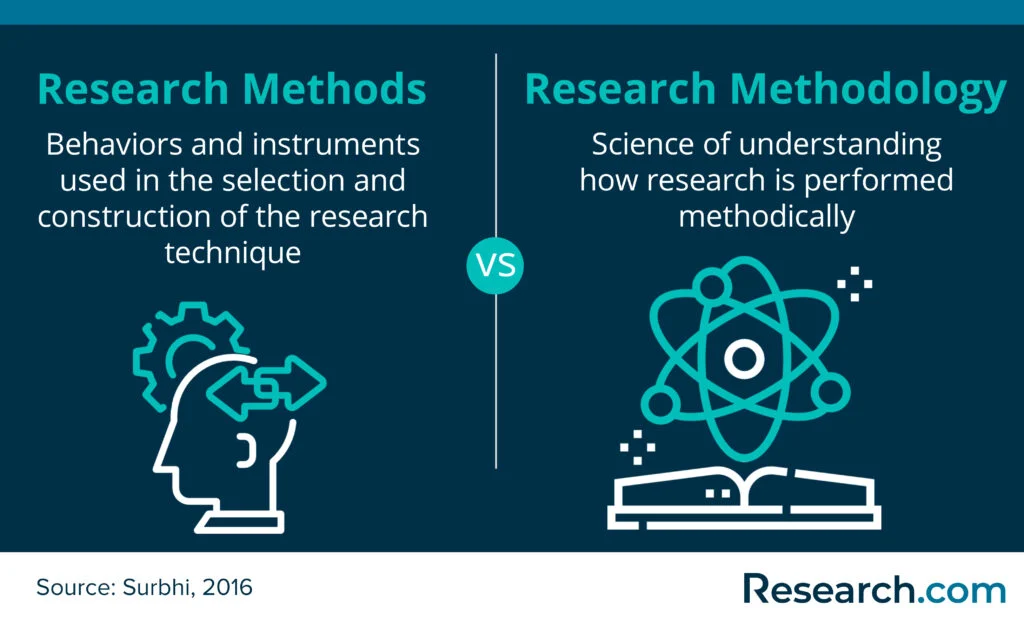Quantitative research is a type of research that uses numerical data to measure and analyze the behavior of a population. It is used to answer questions about the relationships between variables, to measure the impact of a particular intervention, or to compare different groups. Quantitative research is often used in the social sciences, such as psychology, sociology, economics, and political science. It can also be used in the natural sciences, such as biology and chemistry. Quantitative research is a powerful tool for understanding the world around us and can provide valuable insights into the behavior of individuals and groups.
Exploring the Benefits of Quantitative Research for Businesses
Quantitative research is a powerful tool for businesses, providing valuable insights into customer behavior, market trends, and the effectiveness of marketing campaigns. This type of research is conducted using numerical data, which can be collected through surveys, polls, and other methods. By analyzing this data, businesses can gain a better understanding of their customers and the market, allowing them to make more informed decisions.
The primary benefit of quantitative research is that it provides a more objective view of the market. By collecting numerical data, businesses can gain a clearer picture of customer preferences, buying habits, and other factors that influence their decisions. This data can be used to identify trends and patterns, allowing businesses to better understand their target audience and develop more effective marketing strategies.
Quantitative research also allows businesses to measure the effectiveness of their marketing campaigns. By tracking the number of customers who respond to a particular campaign, businesses can determine which strategies are working and which are not. This data can then be used to refine and improve future campaigns, ensuring that businesses are getting the most out of their marketing efforts.
Finally, quantitative research can help businesses identify potential opportunities in the market. By analyzing customer data, businesses can identify areas where they can expand their offerings or target new customers. This data can also be used to identify potential partnerships or collaborations with other businesses, allowing businesses to capitalize on new opportunities.
Overall, quantitative research provides businesses with valuable insights into their customers and the market. By collecting and analyzing numerical data, businesses can gain a better understanding of their target audience and develop more effective marketing strategies. This data can also be used to identify potential opportunities in the market, allowing businesses to capitalize on new opportunities and grow their business.
How to Design an Effective Quantitative Research Study
Designing an effective quantitative research study requires careful consideration of the research question, the research design, the data collection methods, and the data analysis techniques.
Research Question: The first step in designing an effective quantitative research study is to develop a clear and concise research question. The research question should be specific and focused, and should be framed in a way that allows for the collection of quantitative data.
Research Design: The research design should be chosen based on the research question and the type of data that will be collected. Common research designs include surveys, experiments, and observational studies.
Data Collection Methods: The data collection methods should be chosen based on the research design. Common data collection methods include interviews, questionnaires, and focus groups.
Data Analysis Techniques: The data analysis techniques should be chosen based on the research design and the type of data that will be collected. Common data analysis techniques include descriptive statistics, inferential statistics, and qualitative analysis.
These steps should be followed when designing an effective quantitative research study. Careful consideration of the research question, the research design, the data collection methods, and the data analysis techniques will ensure that the study is well-designed and will yield meaningful results.
Analyzing the Impact of Quantitative Research on Decision Making
Quantitative research has become an increasingly important tool for decision-making in many fields. This type of research involves the collection and analysis of numerical data to gain insights into a particular phenomenon. By providing a systematic and objective approach to data collection and analysis, quantitative research can help decision-makers make more informed decisions.
Quantitative research can provide decision-makers with a better understanding of the underlying factors that influence a particular phenomenon. By collecting and analyzing numerical data, researchers can identify patterns and trends that may not be apparent from qualitative data. This can help decision-makers to identify potential opportunities and risks associated with a particular decision. Furthermore, quantitative research can provide decision-makers with a more accurate picture of the current state of a particular phenomenon, allowing them to make more informed decisions.
Quantitative research can also help decision-makers to identify the most effective strategies for achieving their desired outcomes. By analyzing numerical data, researchers can identify the most effective strategies for achieving a particular goal. This can help decision-makers to make more effective decisions by focusing their efforts on the most effective strategies.
Finally, quantitative research can help decision-makers to evaluate the effectiveness of their decisions. By collecting and analyzing numerical data, researchers can measure the impact of a particular decision on a particular phenomenon. This can help decision-makers to determine whether their decisions are having the desired effect and to make adjustments as necessary.
In conclusion, quantitative research can be a powerful tool for decision-making. By providing a systematic and objective approach to data collection and analysis, quantitative research can help decision-makers to make more informed decisions and to identify the most effective strategies for achieving their desired outcomes. Furthermore, quantitative research can help decision-makers to evaluate the effectiveness of their decisions and to make adjustments as necessary.
Understanding the Limitations of Quantitative Research
Quantitative research is a powerful tool for understanding the world around us. It can provide valuable insights into the behavior of individuals, groups, and organizations. However, it is important to understand the limitations of quantitative research in order to ensure that the results are interpreted correctly.
One of the primary limitations of quantitative research is that it is often limited to measuring what can be observed and quantified. This means that it cannot capture the nuances of complex social phenomena, such as the motivations behind people’s behavior. Additionally, quantitative research is often limited to measuring the present, and cannot provide insights into the past or future.
Another limitation of quantitative research is that it is often limited to measuring what is easily observable. This means that it may not be able to capture the underlying causes of a phenomenon, or the effects of a phenomenon on other aspects of society. Additionally, quantitative research is often limited to measuring what is easily measurable, which may not capture the full complexity of a phenomenon.
Finally, quantitative research is often limited to measuring what is easily replicable. This means that it may not be able to capture the unique aspects of a phenomenon, or the effects of a phenomenon on different populations. Additionally, quantitative research is often limited to measuring what is easily generalizable, which may not capture the full range of a phenomenon.
In conclusion, it is important to understand the limitations of quantitative research in order to ensure that the results are interpreted correctly. Quantitative research is a powerful tool for understanding the world around us, but it is limited to measuring what can be observed and quantified, and may not be able to capture the nuances of complex social phenomena. Additionally, it is often limited to measuring the present, and may not be able to capture the underlying causes of a phenomenon, or the effects of a phenomenon on other aspects of society.
Comparing Qualitative and Quantitative Research Methods
Qualitative and quantitative research methods are two distinct approaches to gathering and analyzing data. Qualitative research is primarily concerned with understanding the meaning behind a phenomenon, while quantitative research is focused on measuring and quantifying the phenomenon. Both methods have their advantages and disadvantages, and both can be used to gain valuable insights into a given topic.
Qualitative research is often used to explore a phenomenon in depth and to gain a better understanding of the context in which it occurs. This type of research typically involves interviews, focus groups, and other methods of gathering data from participants. Qualitative research is often used to gain a better understanding of people’s attitudes, beliefs, and behaviors. It is also useful for exploring the underlying causes of a phenomenon.
Quantitative research, on the other hand, is focused on measuring and quantifying a phenomenon. This type of research typically involves surveys, experiments, and other methods of collecting data from participants. Quantitative research is often used to test hypotheses and to measure the prevalence of a phenomenon. It is also useful for making predictions about future trends.
Both qualitative and quantitative research methods have their advantages and disadvantages. Qualitative research is often more time-consuming and expensive than quantitative research, but it can provide a more in-depth understanding of a phenomenon. Quantitative research is often less expensive and time-consuming than qualitative research, but it can provide more reliable and objective data. Ultimately, the choice of which method to use depends on the research question and the resources available.
Conclusion
Quantitative research is a powerful tool for understanding the world around us. It can provide valuable insights into the behavior of individuals, groups, and organizations. By collecting and analyzing data, quantitative research can help us to better understand the relationships between variables and to make more informed decisions. Quantitative research is an invaluable tool for understanding the world and making decisions that are based on evidence.
Discussion
[wpaicg_chatgpt]



